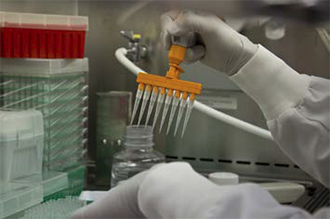Bioengineering Mouse Genomes to Advance Research and Precision Medicine. It’s Not Science Fiction
Each year, billions of dollars are spent on studying human diseases. Most science experts will agree that the use of laboratory animals is essential to understand how certain ailments develop in humans and to develop novel therapeutic approaches. Due to the ethical dilemma of conducting experiments in people as well as the advances of research studies in well-defined and characterized animal species, scientists have relied on laboratory animals as research models for more than 70 years. The discovery that many diseases are caused in part by one’s genetic makeup has created an urgent mission among scientists to better understand how genes work. The race for a cure for some of the most common genetic-based conditions such as chronic inflammatory bowel diseases (Crohn’s disease) is increasing rapidly with the introduction of personalized, precision medicine. Precision medicine is an emerging approach for disease treatment and prevention that considers individual variability in environment, lifestyle, and genes for each person. Unfortunately, animal models with precise genetic mutations that are associated with and contribute to human diseases in a specific individual or group of patients are rarely available. As large amounts of genetic data and medical records will be collected from individuals in the near future, more precision animal models will be needed. To access this new generation of animal models, scientists will rely on centralized biological repositories, where bioengineered mice and other animal models are donated, derived, archived, and distributed to the research community.

One such repository that is well positioned to assist scientists in this new era of biomedical research is the Mutant Mouse Resource and Research Center (MMRRC). Established by the National Institutes of Health in 1999, the MMRRC has received millions of dollars to continually support the program, resulting in increased access to important mouse models worldwide. The MMRRC, the Nation’s primary mouse repository, consists of four Centers (at the University of North Carolina at Chapel Hill, University of Missouri, University of California at Davis, and The Jackson Laboratory). This consortium is coordinated by a special customer service Informatics Coordination and Service Center. The MMRRCs serve to import, maintain, cryopreserve, and distribute mutant mice and mouse embryonic stem cells (ESCs) that model certain human diseases. In addition, the MMRRCs are modeling responsible conduct of research, where scientists are obliged to share their resources among the scientific community. The Centers offer spontaneous mutant and bioengineered mice that have verified genetic identity. This is important because unverified genetic identity contributes to experimental irreproducibility.1 In 2016, the MMRRCs have experienced the highest number of mouse orders since 2007. As of 2017 alone, there have been 11,321 new online users and a cumulative catalog holding of 37,958 strains that include 13,044 ESCs. This reflects the popularity of the program and more broadly, the growing need for genetically altered mouse models.
Besides accepting and re-distributing mouse strains and germ cells, each of the Centers develops new technologies to improve the handling of mutant mice, including advances in assisted reproductive techniques, cryobiology, genetic analysis, phenotyping, and infectious disease diagnostics. The Centers also are pursuing better ways to bioengineer mice, which is to “knock-out,” mutate, or introduce human genes into the mouse genome. For example, if “Gene X” is linked to certain cancers in humans, scientists may then target the mouse equivalent of Gene X by removing, editing, or introducing sequences into this gene. Scientists at the consortium are improving, developing, and leveraging exciting innovative technologies that benefit the biomedical community. Until recently, scientists have relied on slow and expensive methods of bioengineering mice. The MMRRCs are using a novel technology called Clustered Regularly Interspaced Short Palindromic Repeat (CRISPR)/CRISPR associated protein 9 (Cas9) to edit the genome during the early stages of development in the mouse. CRISPR/Cas9 provides a major benefit for scientists worldwide because of its low cost, efficiency, and rapid turnaround time. The MMRRCs are committed to providing high-quality control measures and an immense collection of scientific expertise to support reliable, rigorous, and reproducible research.
Reference
1 Freedman, L. P., Cockburn, I. M., Simcoe, T. S. The economics of reproducibility in preclinical research. PLoS Biol. 2015 Jun 9;13(6):e1002165.



